
Beijing ZEHO Waterfront Ecological Environment Treatment Co., Ltd. was established in 1997 and is positioned as an "urban waterfront space operator". It is a national high-tech enterprise and a Beijing enterprise technology center.The company has been deeply engaged in the field of ecological environment for 27 years, with the concept of sustainable development at its core and guided by Nature-based Solutions (NbS). It has established three major business segments: ecological environment governance, ecological water infrastructure, and urban waterfront spaces, offering customers a systematic solution encompassing "technology + design + construction + operation + business", and is committed to facilitating sustainable development between humans and nature through intelligent ecology.
Learn more >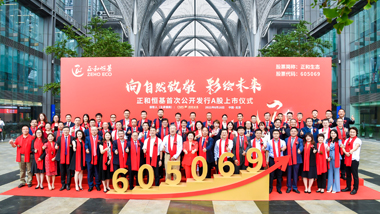
With 27 years of experience in the ecological environment field, ZEHO ECO upholds the concept of sustainable development as its core and is guided by Nature-based Solutions.
Learn more >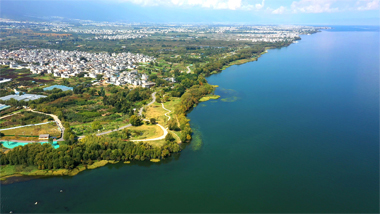
We dived deep into the eco-environment industry and built up a service system covering the whole industry chain of design, build, intelligence, investment, and operation.
Learn more >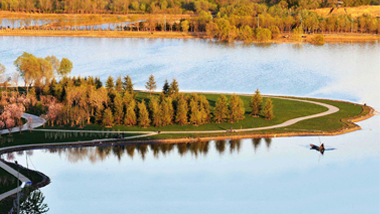

We stimulate the vitality of organizations and individuals through professional training system and career development path, and help employees and enterprises grow together.
Learn more >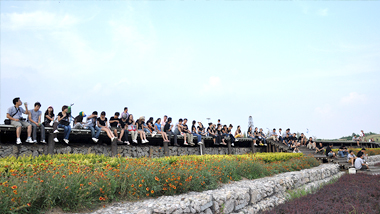
If you have any questions about our business, products, technologies and cooperation, please contact us through the following channels.
Learn more >
On January 25, China Natural Resources News, the media in charge of the Ministry of Natural Resources, made a special page report on the ecological restoration achievements of the Fengpei canal in Nansi Lake, Jiangsu Province. Fengpei canal is an important node for the ecological protection and restoration of the Grand Canal. ZEHO ECO as the designer and constructor of the project, restored the degraded ecosystem with Nature-based Solutions, built a blue-green ecological corridor, and introduced the story of Fengpei canal’s pollution control, water purification and wetland protection to reporters at the project site.
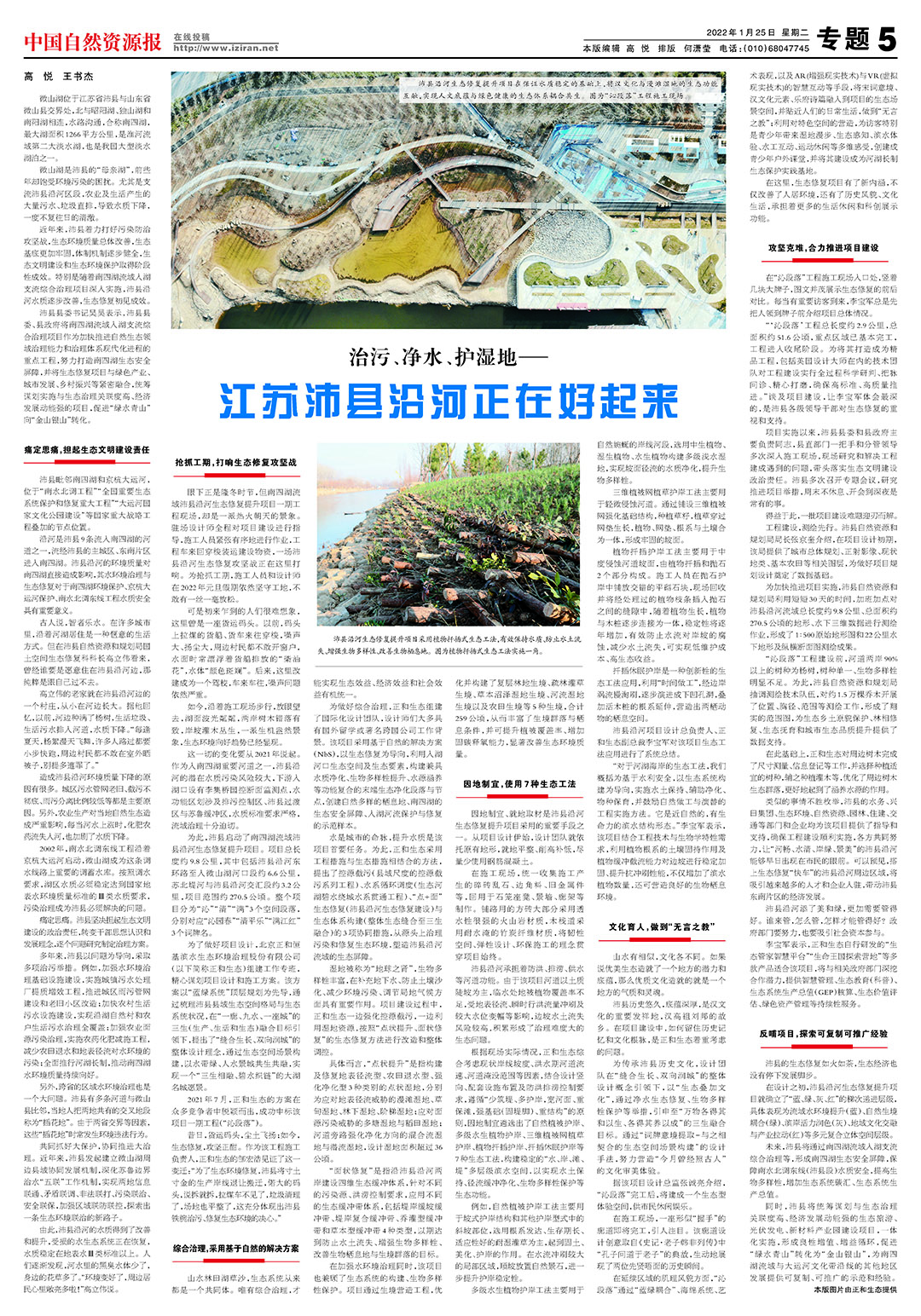
January 25 China Natural Resources News © China Natural Resources News
Pollution Control, Water Purification and Wetland Protection - Peixian County, Jiangsu Province is Getting Better Along the River
Weishan Lake is at the junction of Pei County, Jiangsu Province, and Weishan County, Shandong Province. It is connected to Zhaoyang Lake, Dushan Lake and Nanyang Lake in the north and connected by water. It is collectively known as Nansi Lake. The largest lake covers an area of 1266 square kilometers. It is the second largest freshwater lake in the Huaihe River Basin and one of the large freshwater lakes in China.
Weishan Lake, the “Mother Lake” of Peixian County, was plagued by environmental pollution a few years ago. In particular, in the riverside section of Peixian County, a tributary, a large amount of sewage and garbage from agriculture and domestic life were directly discharged, resulting in the decline of water quality, which was not as clear as before.
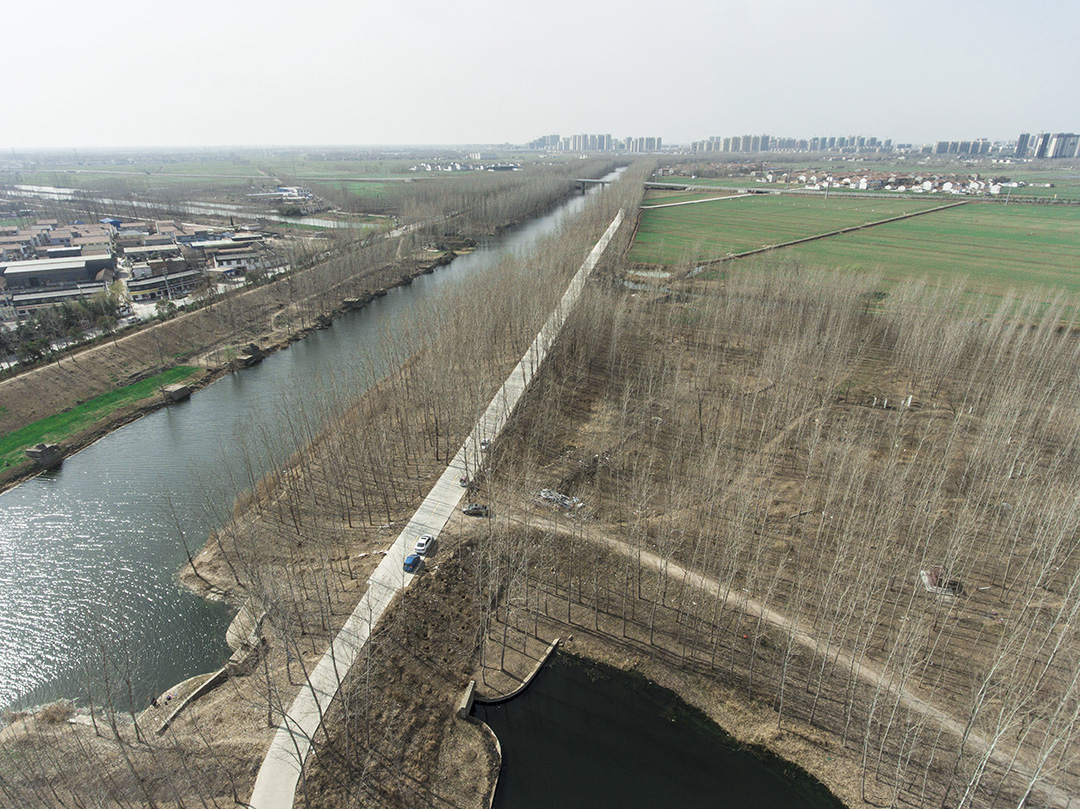
bird's-eye view before ecological restoration
In recent years, Peixian County has made significant efforts to fight against pollution. The overall quality of the ecological environment has been improved, the ecological base has become stronger, the system and mechanism have been gradually improved, and the construction of ecological civilization and ecological environment protection have achieved phased results. In particular, with the in-depth implementation of the comprehensive treatment project of the tributaries into the Nansi Lake Basin, the water quality along the river in Peixian County has been gradually improved, and the ecological restoration has achieved initial results.
Wu Hao, Secretary of Peixian County Party Committee, said that the Peixian County Party Committee and government took the comprehensive treatment project of the tributaries into the lake in the Nansi Lake Basin as a key project to speed up the modernization process of the governance capacity and governance system in the natural ecological field, worked hard to build the ecological security barrier of the Nansi Lake, closely integrated the ecological restoration project with green industry, urban development, rural revitalization, etc., and made overall planning and implementation highly related to ecological governance projects with strong momentum of economic development will promote the transformation from “green water and green mountains” to “golden mountains and silver mountains”.
Learn From the Bitter Experience and Shoulder the Responsibility of Ecological Civilization Construction
Peixian County is next to the Nansi Lake and the Beijing Hangzhou Grand Canal. It is at the node of the superposition of national major strategic projects such as the South-to-North Water Transfer Project, National Major Ecosystem Protection and Restoration Project, Grand Canal National Cultural Park Construction.
Yan River is one of the nine rivers flowing into Nansi Lake in Peixian County. It flows through the main urban area and southeast area of Peixian County and enters Nansi Lake. The environmental quality along the river in Peixian County has a direct impact on the Nansi Lake. Its water environment treatment and ecological restoration are of great significance to the environmental protection of the Nansi Lake, the protection of the Beijing Hangzhou Grand Canal and the water quality safety of the East Route of the South-to-North Water Transfer Project.
The ancients said that wise men enjoy water. In many cities, living along rivers and lakes is a pleasant way of life. However, according to Gao Liwei, head of the land and Space Ecological Restoration Office of the Peixian County Natural Resources and Planning Bureau, anyone who once wanted to live along the river in Peixian County would simply have a hard time with himself.
Gao Liwei’s hometown is a village along the river in Peixian County. He grew up by the river. According to his recollection, in the past, the river was full of poplar trees, domestic garbage and sewage were discharged into the river, and the water quality decreased. “Every summer, Yang Xu dances all over the sky. Many people have to run fast in small steps when passing by. The surrounding villagers dare not dry their quilts outdoors. Let alone suffer too much.”
There are many reasons for the decline of environmental quality along the river in Peixian County. The main reasons are the old sewage pipe network in the urban area, incomplete sewage interception and low separation ratio of rain and sewage. In addition, agricultural production has a serious impact on the local natural ecology. Whenever the river rises, chemical fertilizers and pesticides are discharged into the river, which also exacerbates the decline of water quality.
In 2002, the East Route of the South-to-North Water Transfer Project started along the Beijing Hangzhou Grand Canal, and Weishan Lake became an important regulation and storage reservoir on this water transfer line. According to the water transfer requirements, the water quality in the lake area must stably meet the class III water quality requirements of the national surface water environmental quality standard. Pollution control has become a problem that Peixian County must solve.
As a warning for the future, Peixian County firmly assumes the political responsibility for the construction of ecological civilization, changes the cadres’ ideological understanding and development concept, and studies and formulates governance plans one by one.
Over the years, Peixian County has taken a number of pollution control measures based on problems. For example, strengthen the construction of water environment treatment infrastructure, implement the quality and efficiency improvement project of urban sewage treatment plants, and promote the construction of urban rainwater and sewage pipe networks and the transformation of old residential areas. Accelerate the construction of rural domestic sewage facilities to achieve full coverage of domestic sewage treatment in natural villages and farmers along the lake. Strengthen the control of agricultural non-point source pollution, implement the project of reducing the application of pesticides and fertilizers, and reduce the pollution of farmland water retreat and surface runoff to the water environment. Comprehensively implement the system of river and lake leaders and promote the sustainable improvement of the water environment quality of the Nansi Lake.
In addition, inter provincial, regional water environment treatment is also a big problem. Peixian County has many rivers next to Weishan County, and the local people call the intersection of the two places “flower arranging land”. Because of the border between the two provinces and other factors, these “flower arranging areas” often have environmental violations.
Work together to protect the environment and jointly promote pollution control. In recent years, Peixian County has started the establishment of a coordinated development mechanism among counties around Weishan Lake, deepened the “five links” working mechanism for water control at the border between Jiangsu and Shandong, realized information connectivity between the two places, joint mediation of contradictions, joint illegal fighting, joint pollution control and joint security, strengthened regional joint prevention and control, and explored a new way for joint ecological environment control.
As a result, the water quality along the river in Peixian County has been improved and improved, the damaged aquatic ecosystem is being restored, and the water quality is stable above the class III standard for surface water. People gradually found that there was less black and smelly water in the river and more flowers and plants around. “The environment is getting better, and the surrounding residents are much more open-minded!” Gao Liwei said.
Grasp the Construction Period and Start the Battle of Ecological Restoration
At present, it is the middle of winter, but the site of phase I project of Peixian County riverside ecological restoration and improvement project in Nansi Lake Basin is in full swing. The resident designers guide the project construction throughout the process. The construction personnel work in a tense and orderly manner. Engineering vehicles shuttle back and forth to transport construction materials. A battle for ecological restoration along the river in Peixian County is starting here. In order to seize the construction period, the construction personnel and designers still stick to the construction site during the New Year’s Day holiday in 2022 and dare not relax at all.
But it is hard for newcomers to imagine that this was once a freight terminal. In the past, cargo ships and trucks Hauling Coal on the wharf shuttled back and forth. The noise and dust were so loud that the surrounding villagers dared not open the windows. The water surface was often floating with “diesel flowers” discharged by cargo ships, and the water body was “colorful”. Later, it was transformed into a driving school, where cars came and went, and the noise problem was still serious.
Nowadays, walking along the construction site, you can see that the lake is sparkling, the trees on both banks are scattered, and the bank slope is covered with shrubs. It is a scene of vitality, and the ecological environment has shown a good trend.
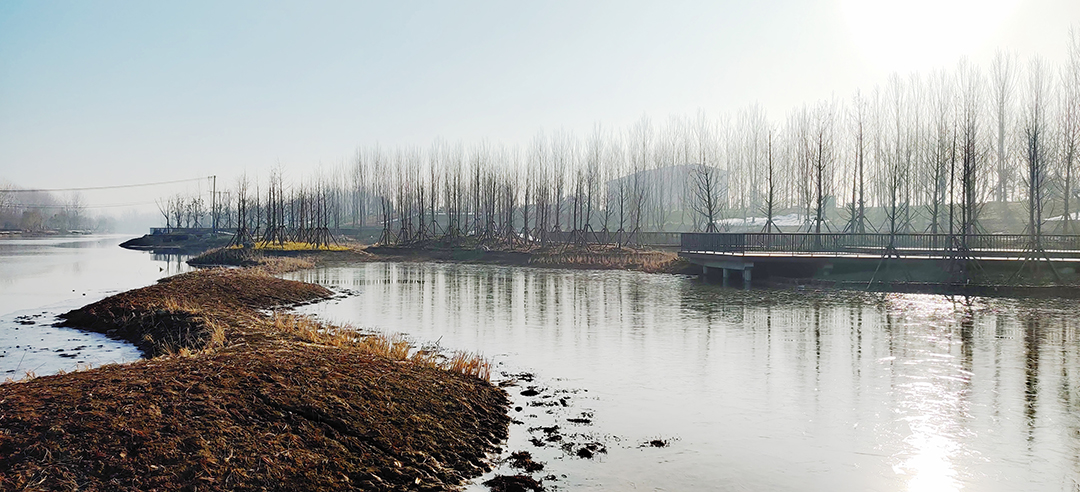
actual scene of project construction
All these changes began in 2021. As one of the important rivers entering the Nansi Lake, Peixian County has a high potential risk of water pollution along the river. Lijiqiao national control section monitoring point is set at the downstream entrance to the lake. The water function zoning involves the sewage control zone, Peixian County transition zone and Sulu buffer zone. The water quality standards are strict, and the watershed governance is very urgent.
Peixian County has launched the ecological restoration and improvement project along the river in Peixian County, Nansi Lake Basin. The total length of the project is about 9.8km, including about 6.6km from Peixian along Hedong Ring Road to Weishan Lake estuary, and about 3.2km from the intersection of Subeidi River and Peixian County along the river. The project covers about 270.5 hectares. The entire project is divided into three spatial sections: “Qin”, “Qing” and “Man”, which correspond to the names of “Qin Yuanchun”, “Qing Pingle” and “Man Jianghong” respectively.
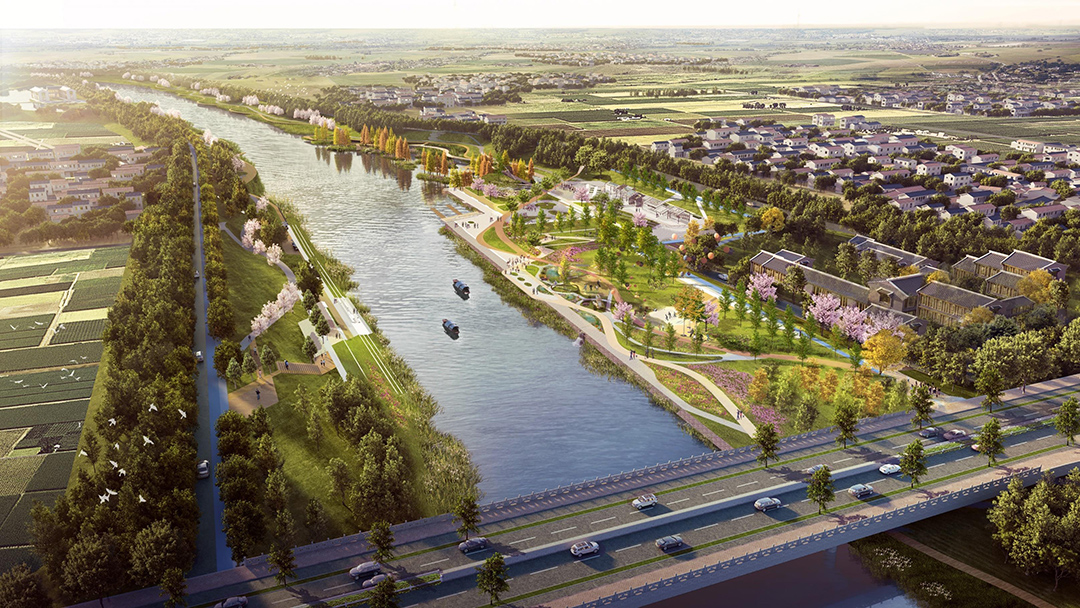
aerial view of Qin section
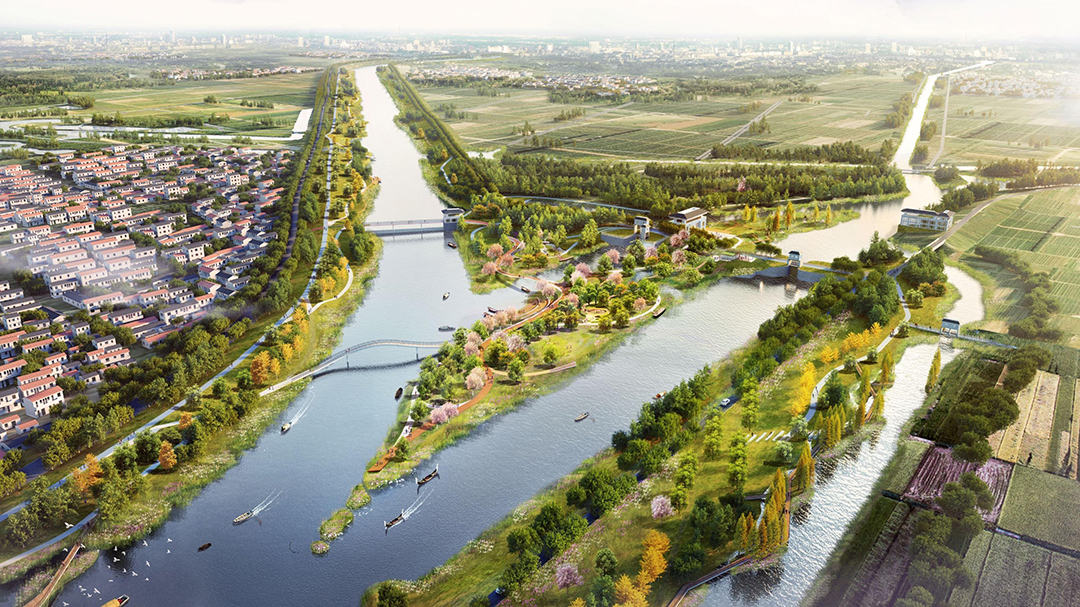
aerial view of Qing section
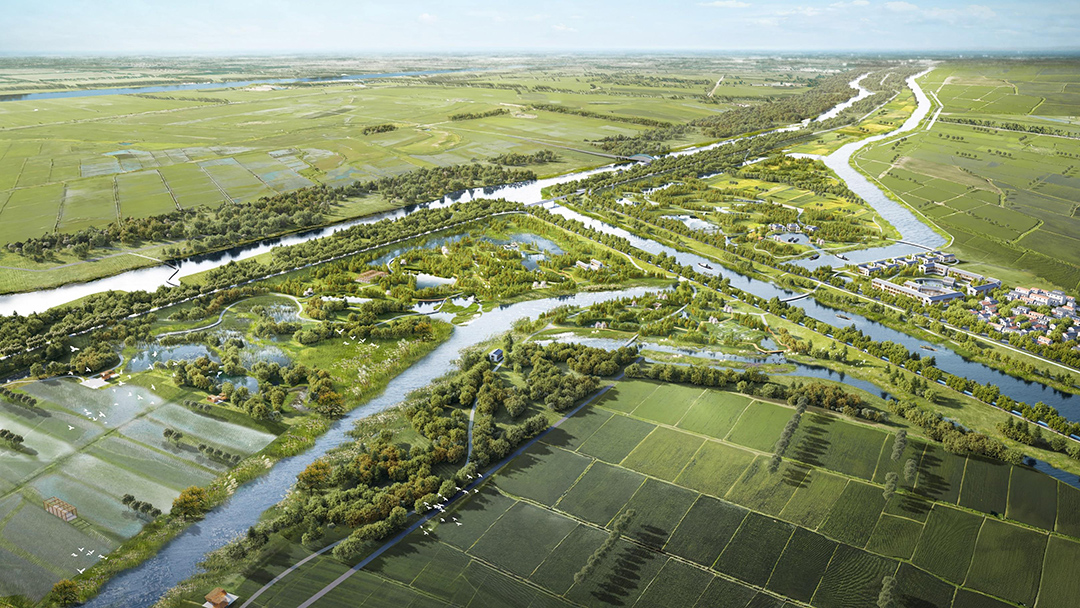
aerial view of Man section
In order to design better, Beijing ZEHO Waterfront Ecological Environment Treatment Co., Ltd. (ZEHO ECO) established a professional group to conduct the project design and construction scheme. Guided by the top-level planning of the “blue-green system”, by combing the ecological spatial pattern and ecosystem status of Peixian County, and under the guidance of the integration goal of “one corridor, nine rivers and one city” (production, life and ecology), the scheme puts forward the overall design concept of “suture growth and two-way moistening the city”. Through the construction of ecological spatial scenes, the scheme is symbiotic and integrated with a water belt green and human waterscape city, Realize the vision of a famous city of the Great Lakes with “three lives in harmony and green water weaving a chain”.
In July, 2021, ZEHO ECO's scheme stood out among many competitors and successfully won the bid for the first phase of the project (Qin section).
In the past, the freight terminal was dusty. But now, ecological restoration is in full swing. As the construction director of the project, Zou Honghao from ZEHO ECO, witnessed this change: “in order to restore the ecological environment, Peixian County conceded and relocated the production coastline with an inch of land and an inch of money. The huge wharf was demolished as soon as it was said to be demolished, the coal truck was gone, the garbage was cleared, and the site was leveled, which fully reflects Peixian County's determination to control pollution with an iron fist and repair the ecological environment.”
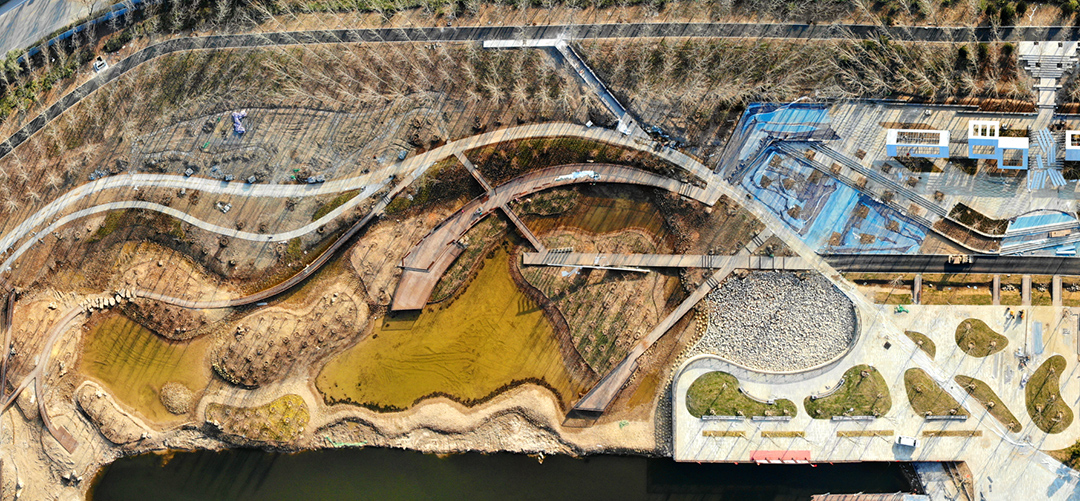
construction of Qin section
Comprehensive Management with Nature-based Solutions
The ecosystem has always been a community with mountains, rivers, forests, fields, lakes, grass and sand. Only comprehensive management can realize the organic unity of ecological benefits, economic benefits and social benefits.
In order to do a good job in comprehensive management, ZEHO ECO has established an international design team. Most of the designers have the background of studying abroad or working in famous multinational companies. The project adopts the Nature-based Solution (NbS), takes ecological restoration as the guide, uses the ecological space and ecological elements of the estuary to build the terminal ecological purification sections and nodes with the functions of water quality purification, biodiversity improvement and water conservation, and creates a demonstration sample of naturally diverse habitats, the ecological security barrier of Nansi Lake and the protection and restoration of the rivers into the lake.
Water is the lifeblood of a city, and improving water quality is the primary task of the project. For this reason, ZEHO ECO adopts the method of combining engineering measures with ecological measures, and puts forward three collaborative measures source control and sewage interception (a series of source control and sewage interception projects at the county level), water system circulation regulation (ecological river lake clear water around the city water system connection project), “point + area” ecological restoration (ecological restoration and construction along the river in Peixian county) and ecological system construction (overall ecological suture to integrating “three living things”), control pollution and repair the ecological environment from the source, and create an ecological barrier along the river basin in Peixian County.
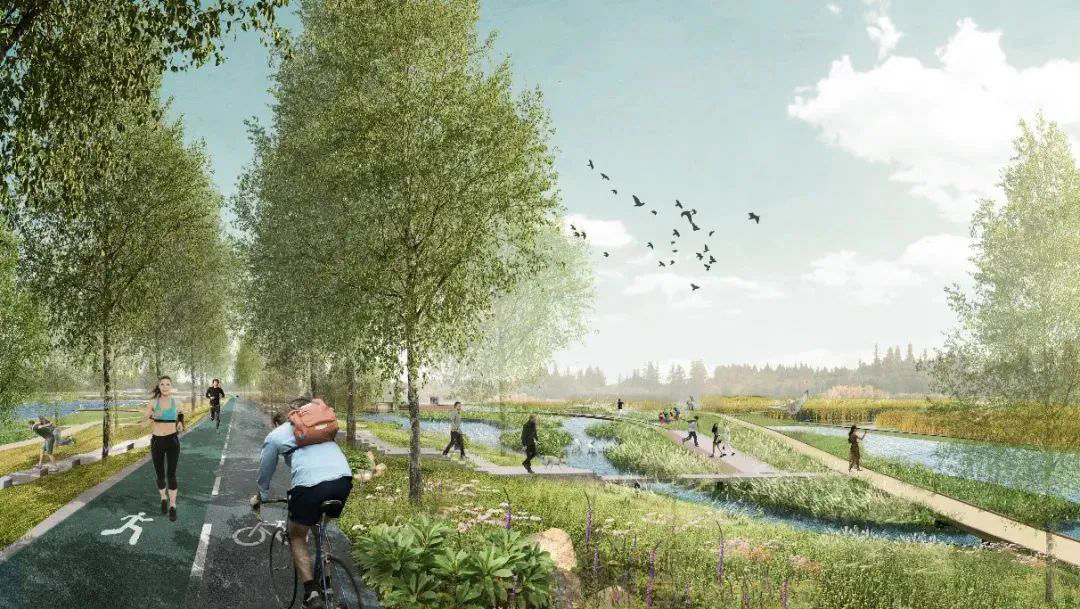
external purification area
Wetland is known as the “kidney of the earth” with rich biodiversity. It plays an important role in supplementing groundwater, preventing soil desertification, reducing environmental pollution and regulating local climate. During the construction of the project, ZEHO ECO will strengthen source control and sewage interception while utilizing wetland resources to carry out transformation and overall regulation according to the ecological restoration method of “point lifting and area restoration”.
Specifically, “point elevation” refers to the construction and restoration of three types of point wetlands: surface runoff type, farmland recession type and enhanced purification type, which are floodplain wetland, meadow wetland, undergrowth wetland and stepped wetland to deal with the threat of surface runoff; Multi pond wetland and paddy field wetland to deal with the threat of non-point source pollution; The river bypass is a mixed flow wetland and subsurface flow wetland toward enhanced purification, with a design wetland area of over 36 hectares.
“Surface restoration” refers to the construction of a four-dimensional ecological buffer system along the banks of the Peixian County river. According to different pollution sources and flood control requirements, different ecological buffer belt systems are applied, including four types of embankment gentle slope buffer belt, embankment compound buffer belt, arbor shrub buffer belt and herb buffer belt, in order to achieve the goal of preventing water and soil loss, enhancing biodiversity and improving biological habitat and habitat community.
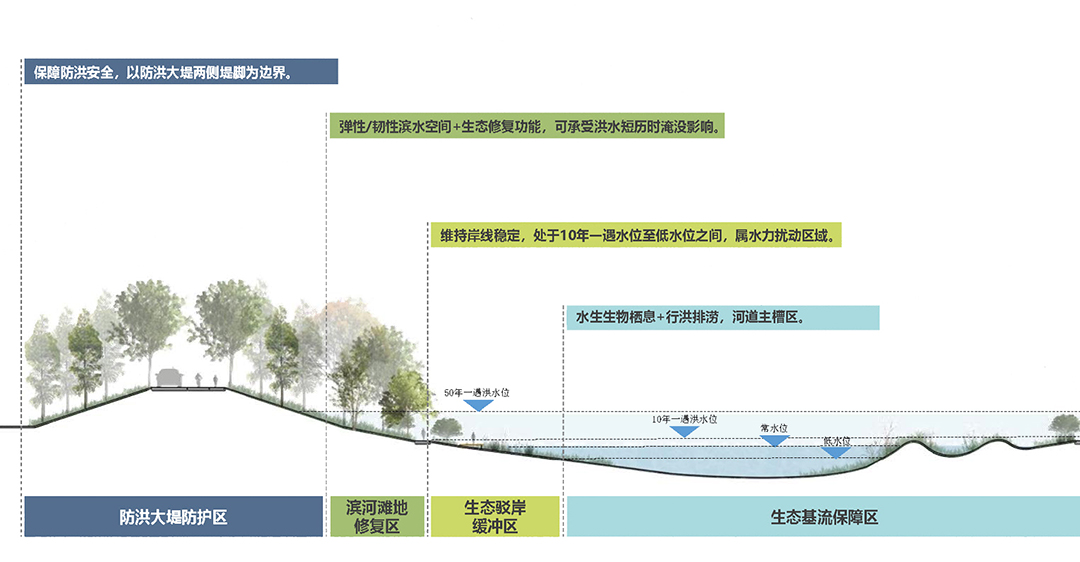
four dimensional ecological buffer zone
While strengthening water environment treatment, the project also considers the construction of ecosystem and biodiversity protection. Through the habitat construction project, the project has optimized and constructed five habitats, including multi-layer forest habitat, sparse forest shrub and grass habitat, herb swamp wetland habitat, river wetland habitat and farmland habitat, totaling 259 hectares, thus enriching the habitat community and habitat conditions, improving the vegetation coverage, increasing the carbon fixation and oxygen release capacity, and significantly improving the quality of the ecological environment.
Seven Ecological Construction Methods were Used According to Local Conditions
Adapting measures to local conditions and using local materials is one of the important means adopted by Peixian County riverside ecological restoration and improvement project. From the beginning of the project design, the design team has relied on the original terrain to level the ground, cut the height and make up the low, and minimize the use of reinforced concrete.

varies measures to local conditions and use local materials
At the construction site, the broken bricks and stones, leftover materials, old metal parts, etc. produced during the construction shall be collected and reused for the production of gabion seats, benches, landscape walls, corridor frames, etc. Most of the square bricks used for paving are made of volcanic rock with strong water permeability, and the wooden plank road is made of water-resistant bamboo carbon fiber. The concept of ductile space, elastic design and environmental protection construction runs through the project.
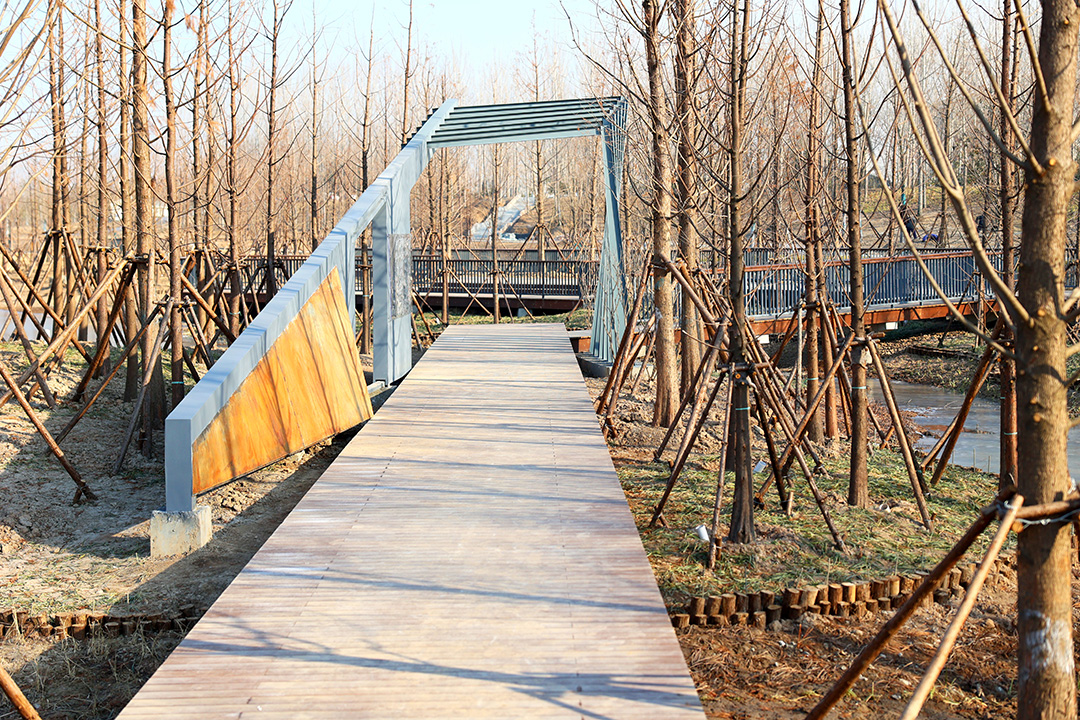
gallery frame
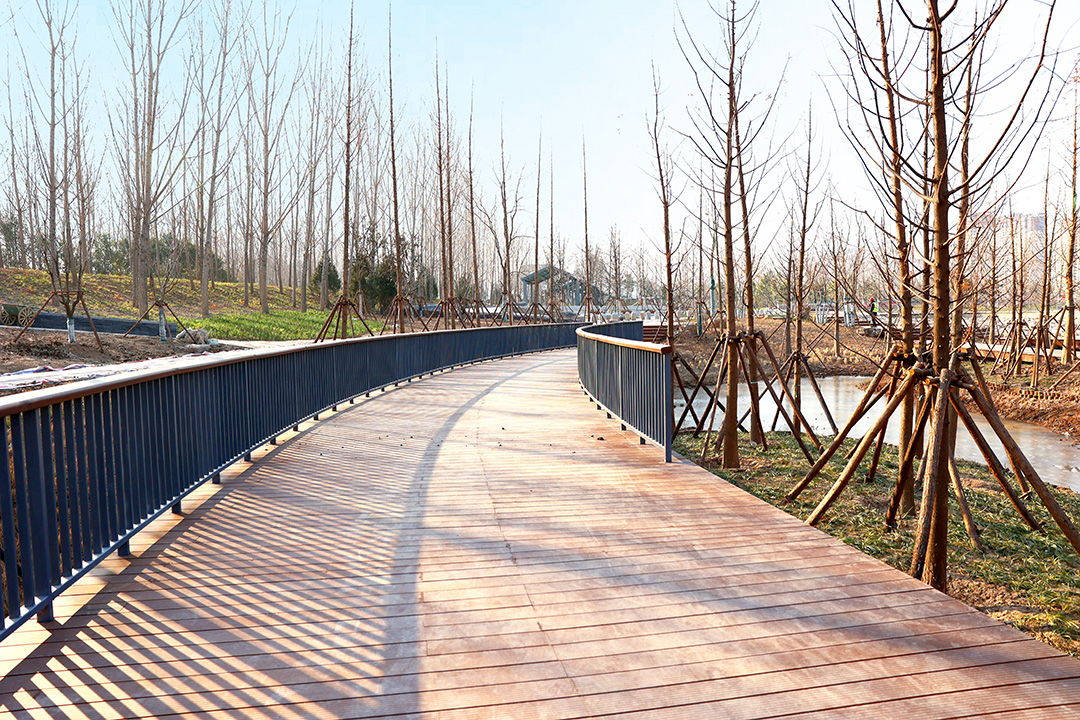
wooden plank road
Peixian County handles flood control, drainage, water supply and other river functions along the river. As the riverway of the project is dominated by steep soil slopes, the coverage of ground cover plants near the water is insufficient, and the slope has a high risk of water and soil loss because of the impact of surface runoff, instantaneous flood discharge scouring and large water level variation, which has accumulated ecological problems with great difficulty in governance.
According to the actual situation of the site, ZEHO ECO has comprehensively considered the current shoreline slope, river flow velocity in flood period, river inundation range and other factors, combined with the design vertical, supporting facilities layout and flood control and drainage control requirements, and followed the principle of "less embankment, more revetment, wide river surface, heavy beach protection, strong foundation (solid embankment foot), heavy structure", and selected natural vegetation revetment, multi-level aquatic plant revetment three dimensional vegetation network planting grass revetment, plant cutting revetment, cutting dormant revetment and other seven ecological construction methods to build a stable multi-level waterfront space of "water, bank, beach and embankment", so as to realize the ecological functions of water and soil conservation, runoff buffer purification, biodiversity protection and so on.
For example, the natural vegetation revetment method is mainly used in slope revetment structures and slope parts of other revetment types. It mainly uses moisture resistant shrubs and grasses with developed roots, long survival period and good adaptability to consolidate soil, beautify and protect the bank. In local areas with large flow scouring, natural landscape stones shall be placed along the slope to further improve the stability of the revetment.
The multi-level hydrophyte revetment method is mainly used in natural meandering river sections. Mesophytes, hygrophytes and hydrophytes are selected to build multi-level shallow water wetlands to purify the water quality of slope runoff and improve biodiversity.
The three-dimensional vegetation net vegetation revetment method is mainly used for slightly eroded river channels. The basic structure is strengthened by laying a three-dimensional vegetation net, grass seeds are planted, and grass grows through the net mat. The plants, net mat, root system and soil are integrated to form a solid slope.
The plant cutting revetment method is mainly used for moderately eroded river slope, which consists of plant cutting and riprap. The construction personnel lay staggered flat stones in the riprap revetment. The treated plant branches are recovered on site and inserted into the gap between riprap. With the growth of plants, the plants are gradually connected with the wooden piles, and the stability will increase year by year, effectively preventing the corrosion of water flow on the bank slope, reducing water and soil loss, and realizing low maintenance cost and high ecological benefits.
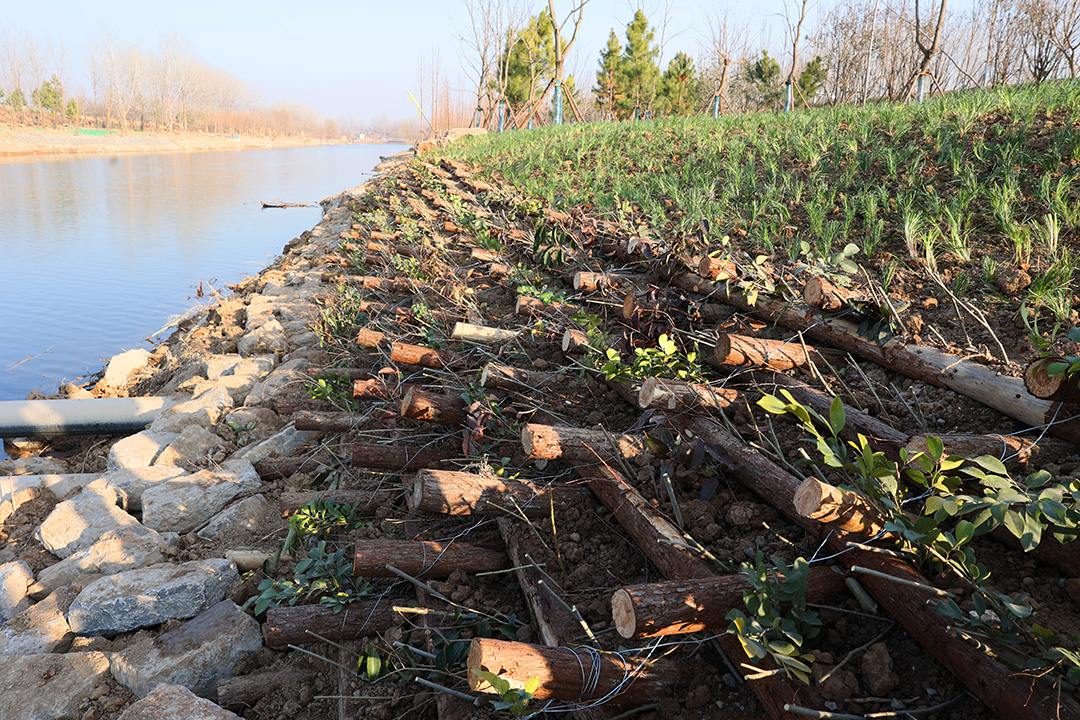
a glance of plant cutting ecological construction method
Cutting dormant revetment is an innovative application of the ecological engineering method. It uses “time to work”, and gradually evolves into concave holes through eddy current and slow scrubbing on the bank, superimposing the root extension of live wood piles, creating a habitat for amphibians.
Li Baojun, general design director of Peixian County riverside project and vice president of ZEHO ECO, systematically summarized the application of ecological construction method in the project.
“For the ecological engineering method of rivers, lakes and coasts, we summarize it as an engineering implementation method based on water conservancy safety, guided by ecosystem construction, implementing water and soil conservation, auxiliary purification, species conservation, and encouraging natural work and succession. It is a near natural and viable waterfront structure.” Li Baojun said that in combination with engineering technology and biological characteristics, the project uses the soil fixation function of plant roots and the buffering and intercepting capacity of plants to stabilize and strengthen the slope and improve the anti scouring performance, which not only increases the number of waterfront plants but also creates a good biological habitat.
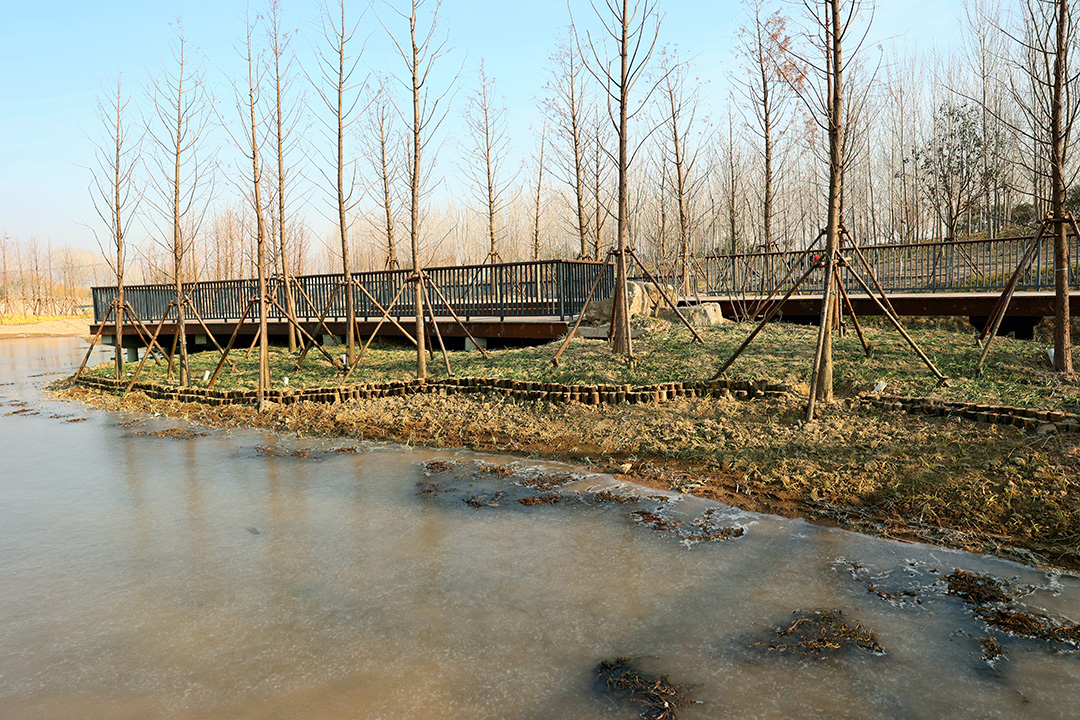
natural ecological revetment
Educate People Through Culture and Achieve "Teaching Without Words"
Mountains and rivers are similar, and cultures are different. If the beautiful ecology creates a place’s potential and heritage, then the high-quality culture creates a place’s temperament and soul.
Peixian County has a long history and profound heritage. It is an important birthplace of Han culture and the hometown of Liu Bang, the emperor of the Han Dynasty. In the project's construction, ZEHO ECO focuses on how to keep historical memory and cultural roots.
In order to inherit the history and culture of Peixian County, the design team, guided by the overall design concept of “suture growth and two-way moistening the city”, extended the “ecological superimposed culture” to the “three life integration goal of” everything gets its own way to live, gets its own way to grow “through water purification ecological restoration, biodiversity protection and other measures. Through the design method of “extracting the artistic conception of Ci and Pai + constructing the corresponding ecological space scene”, efforts are made to create a cultural aesthetic experience of “lighting up the ancients this month”.
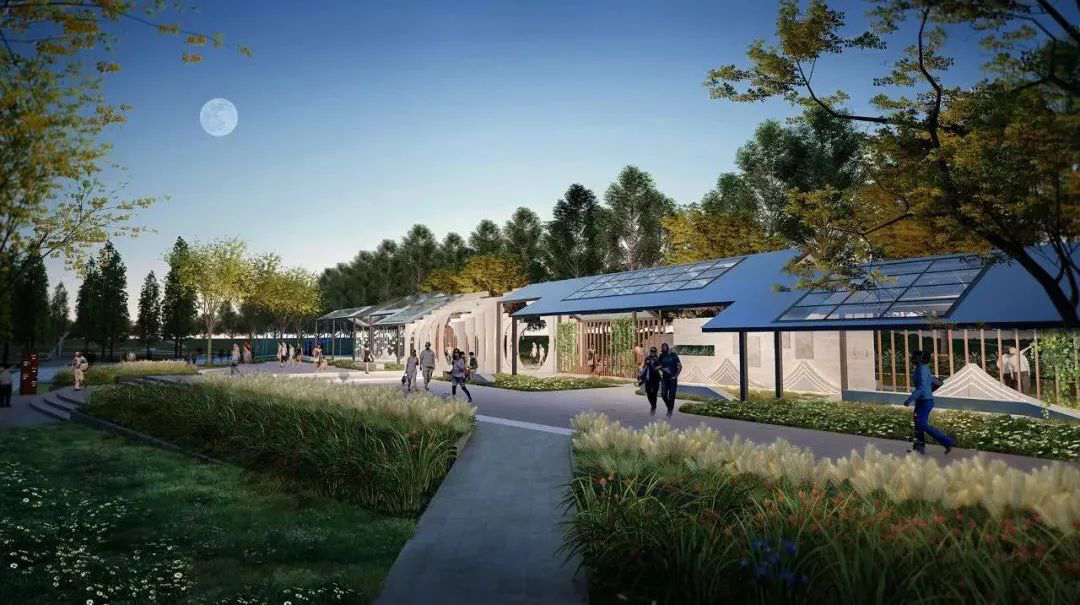
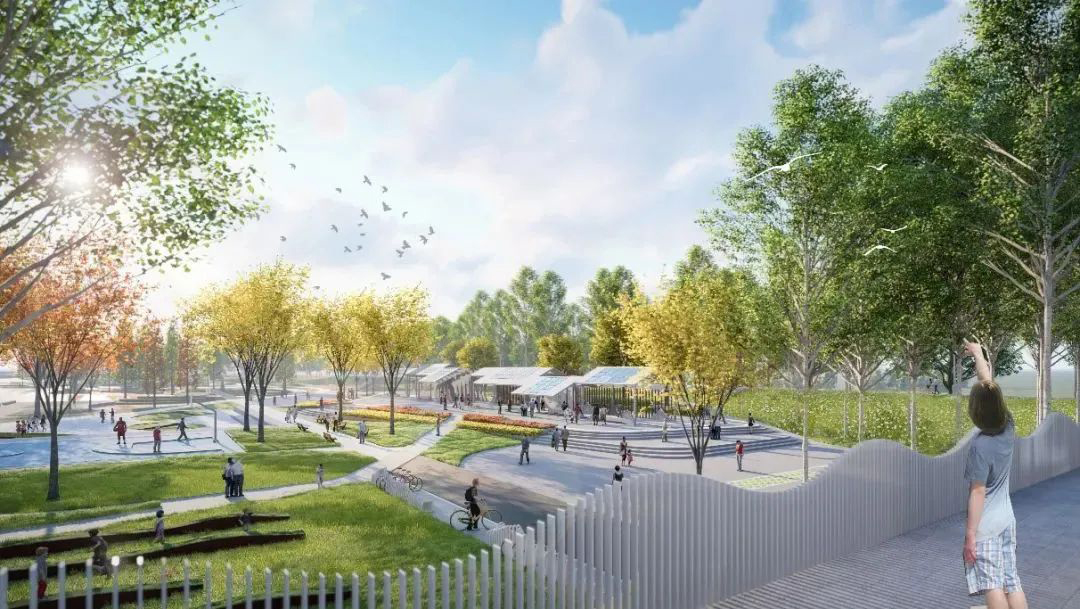
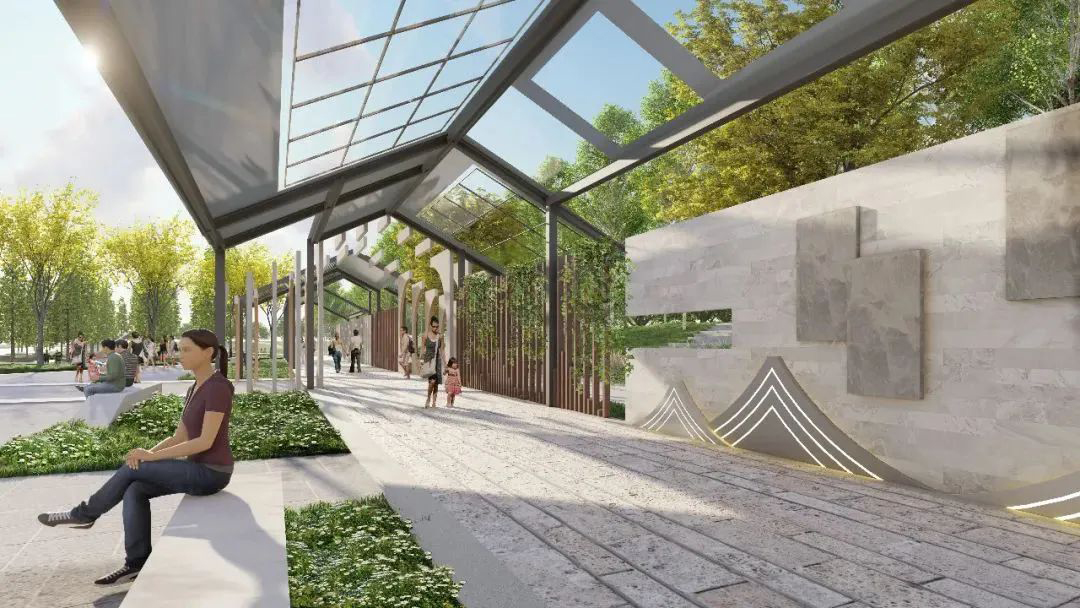
According to Zhang Chengliang, the design director of the project, after the completion of “Qin” section, an ecological experience space will be built for citizens' leisure and entertainment.
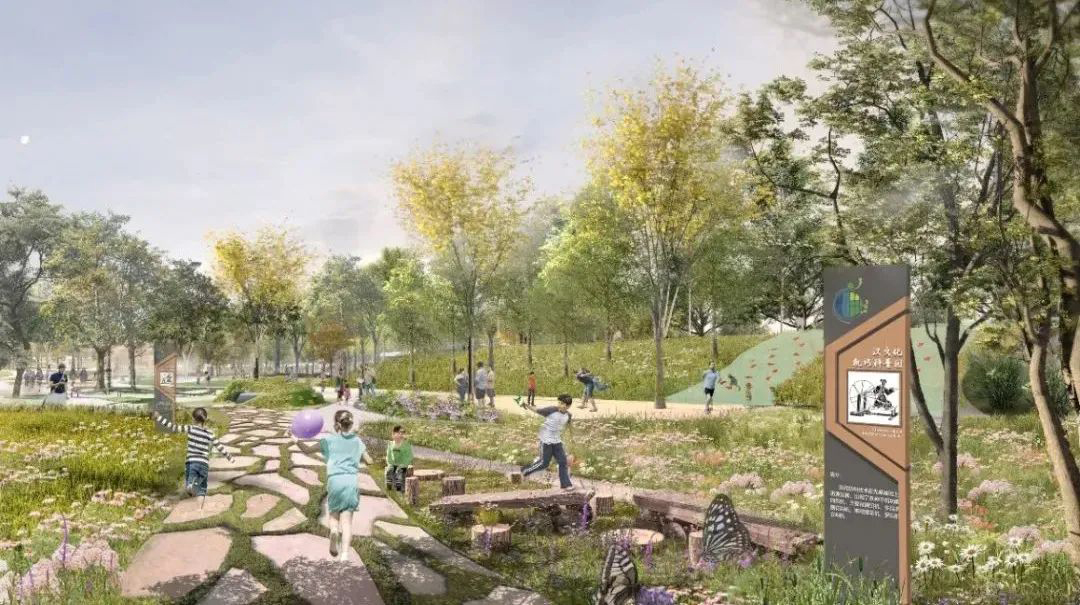
ecological interactive experience
At the construction site, a “handshake” shaped corridor is about to be completed, attracting attention. The design originality of the corridor is derived from the illusion of “Confucius asked Lao Tzu” in historical records · biographies of Han Fei of Lao Tzu, which vividly shows the historical moment when the two sages met.
To continue the regional texture and style, “Qin” section integrates the artistic conception of Song Ci, Chinese cultural elements and Yuefu Poems into the ecological scene space of the project through “blue-green coupling”, sponge system, artistic expression, and the intelligent interaction between AR (augmented reality technology) and VR (virtual reality technology), and is close to people’s daily life to achieve “teaching without words”; Make use of the construction of characteristic space to bring visitors, especially teenagers, multi-dimensional feelings such as wetland walking, ecological perception, waterfront experience, hydraulic interaction, sports and leisure, create an outdoor classroom for teenagers, and build it into a long-term ecological protection practice base for rivers and lakes.
Here, the ecological restoration project has a new connotation. It has not only improved the living environment but also the historical style and cultural life. It undertakes more functions of life, leisure and scientific innovation display.
Overcome Difficulties and Jointly Promote Project Construction
At the entrance of the construction site of the "Qin" section project, several large signs are erected, showing the comparison of ecological restoration before and after. Whenever important visitors arrive, Li Baojun always takes them to the sign to introduce the overall situation of the project.
“The ‘Qin section’ project has a total length of about 2.9 kilometers and a total area of about 51.6 hectares. The key areas have been basically completed and the project has entered the final stage. In order to build it into a high-quality project, the technical team, including British design masters, has carried out scientific research and judgment, pulse checking and careful polishing throughout the whole process of the project construction to ensure high standards and high quality.” When talking about the project construction, what Li Baojun learned most is the attention and support of leading cadres at all levels in Peixian County for ecological restoration.
Since implementing the project, the main responsible comrades of Peixian County Party Committee and government, the heads of county departments and leaders in charge have visited the construction site for many times to study and solve the problems encountered in the project's completion, and take the lead in implementing the political responsibility for the construction of ecological civilization. Peixian County has held many special meetings to study and promote project measures. It is common to have meetings late at night without rest on weekends.
Thanks to this, several project construction problems have been solved.
Engineering construction, surveying and mapping first. Zhang Jingkui, director of Peixian County Natural Resources and Planning Bureau, introduced that in the early stage of project design, the Bureau provided relevant layers such as urban master planning, orthophoto, current land types, basic farmland, etc., which laid a data foundation for project planning and design.
In order to speed up implementing the project, the Natural Resources and Planning Bureau of Peixian County used just 30 days to work overtime to map the terrain and underwater three-dimensional data along the river basin of Peixian County, with a total length of about 9.8 kilometers and a total area of about 270.5 hectares, and formed 1:500 original topographic map and 22 km underwater terrain and vertical and horizontal section map mapping results.
Before the construction of the “Qin” section project, over 90% of the tree species on both banks of the river were Poplar. The tree species were single, and the biodiversity was obviously insufficient. To this end, Peixian County Natural Resources and Planning Bureau dispatched a surveying and mapping technical team to carry out surveying and mapping of the location, diameter at breast height and range of about 15000 arbors, forming a detailed range map, providing data support for protecting the original ecological native appearance, forest restoration, ecological cultivation and the improvement of urban ecological quality.
On this basis, ZEHO ECO has completed the size measurement, information registration and other work for the surrounding trees, and selected suitable tree species to be planted, supplemented by shrubs, to optimize the ecological community of the surrounding trees and better play the role of water conservation.
There are many similar events. Peixian County’s Water Affairs, Xingtian Group, ecological environment, natural resources, gardens, housing construction, transportation and other departments and enterprises have provided guidance and support for the project to ensure the smooth implementation of the project. All parties make joint efforts to make Peixian County’s riverside with “smooth river, clear water, green bank and beautiful scenery” appear in the eyes of the public as soon as possible. It can be predicted that the area around Peixian County along the river, which takes the “express” of ecological restoration, will attract more and more talents and enterprises to settle in, and drive the economic development of the southeast area of Peixian County.
Peixian County has added beauty and green along the river, which needs to be well managed. Who is in charge, how, and how can we manage it well? Government departments should strive to attract social capital to take part.
Li Baojun said that the “ecological housekeeper intelligent platform” and “life Kingdom exploration camp” and other products independently developed by ZEHO ECO are suitable for the project, and will deeply tap the cooperation potential with relevant government departments to provide sustainable services such as intelligent management, ecological education (popular science), ecosystem gross product (GEP) accounting, ecological value assessment, and green asset management.
Back Feeding Projects, Exploring Replicable and Generalizable Experiences
The ecological restoration of Peixian County is in full swing, and the ecological economy has not stopped developing.
At the beginning of design, Peixian County riverside ecological restoration and improvement project has established a hierarchical hierarchy of “blue, green, gray and red”, which is specifically manifested in the multi-dimensional composite space hierarchy of basin water environment improvement (blue), natural habitat coupling (green), shore-side vitality embellishment (gray), regional culture integration and industrial pull (red).
In the future, Peixian County will form the Nansi Lake ecological security barrier through comprehensive treatment of the tributaries of the Nansi Lake Basin, ensure the water quality safety of the East Route of the South-to-North Water Transfer (Peixian County section), improve biodiversity, and increase the ecosystem carbon sink and ecosystem GDP.
At the same time, Peixian County will plan and implement the eco-tourism, photovoltaic power generation and new material industrial park construction projects with high correlation with ecological governance and strong economic development momentum, form a virtuous value-added and gain cycle, promote the transformation of “green water and green mountains” into “golden mountains and silver mountains”, and provide replicable and generalizable demonstration and experience for the development of the Nansi Lake Basin and other areas along the Grand Canal cultural belt.